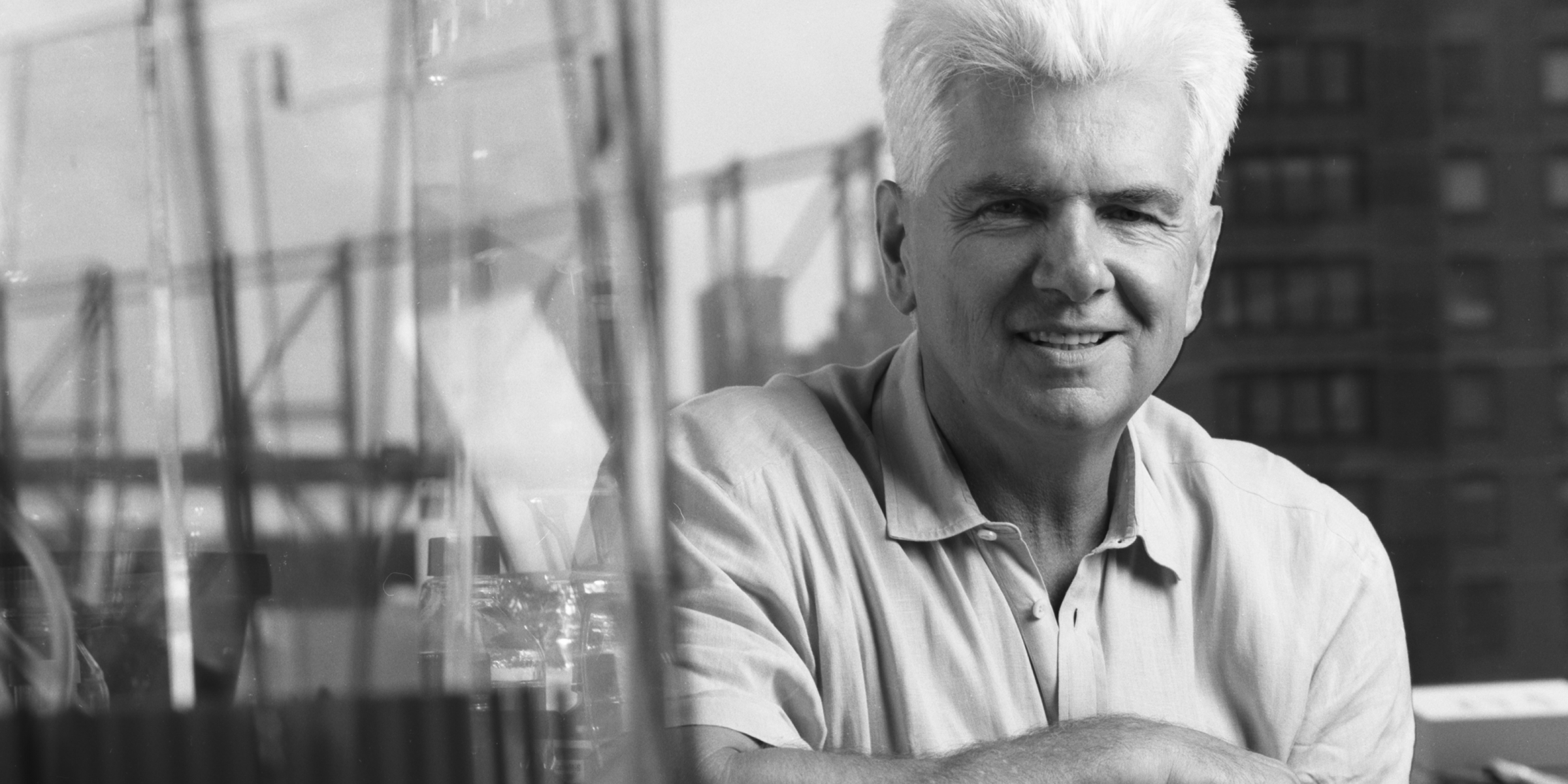The modern field of cell biology was born in the 1950s when Albert Claude, Christian de Duve and George E. Palade at The Rockefeller Institute for Medical Research applied the electron microscope to living cells, opening to view a world far more complex and intricately regulated than any had anticipated. From their work, we now understand that the cell contains numerous distinct components, called organelles, where discrete cellular functions are centralized, and each protein produced inside the cell is uniquely assigned, like a worker drone, to a particular organelle. The question that loomed over cell biology throughout the next two decades was how cellular proteins find their way from the ribosome, the organelle where they are born, to their assigned places. In 1980, Günter Blobel answered that question, and received the 1993 Albert Lasker Basic Medical Research Award for his work.
By the time Dr. Blobel joined Rockefeller as a postdoctoral researcher in the laboratory of Philip Siekevitz and George E. Palade, one of the founders of modern cell biology, Rockefeller labs had revealed the functions of most of the cell’s major organelles: The mitochondria, for example, is where the cell’s energy is produced; waste products are broken down in the lysosome; vacuoles guard against toxins; and ribosomes produce proteins that do the work inside all these organelles. In order to keep separate the various processes carried out in the cell, organelles have impermeable membranes. So the question of how a protein reaches its assigned organelle came with a corollary: Once a protein reaches its destination, how does it get inside?
Dr. Blobel studied the process in the endoplasmic reticulum, a system of membranes that assist in the genetic translation carried out by ribosomes, many of which are bound to it. It is also the organelle responsible for preparing secretory proteins for their journey to the cell membrane and beyond it into the bloodstream. Dr. Blobel first came up with the signal hypothesis in conjunction with colleague David Sabatini in 1971, and by 1980, he had demonstrated the general molecular principles underlying the process: that eukaryotic proteins contain zipcode-like signals in their molecular structure that act as address tags to guide them to the part of the cell to which they are assigned — either a specific organelle, a location on the cell membrane or in the bloodstream.
In 1975, Dr. Blobel developed a unique, cell-free experimental system designed to simulate the processes of protein translation and translocation, allowing him to break the processes down and observe their individual biochemical steps. Over the next several years, he was able to demonstrate that the coding system he had hypothesized comes in the form of signal peptide sequences attached to each protein, and that these peptide sequences act not only as address tags but as a kind of cellular global positioning system that guides the protein to a specific location, and also as a key to gain access beyond the otherwise impermeable membrane. Each organelle membrane, he further discovered, has on its end a receiving molecule, called a signal recognition factor, that helps guide the protein toward it and acts as the lock to the signal sequence’s key, opening a pore-like channel in the membrane. The protein, being too bulky to fit through the narrow opening intact, unfolds itself from its highly complex structure and passes through the membrane channel as a long chain of peptides.
As it turned out, the mechanisms that Dr. Blobel first set forth, now known collectively as protein targeting, are highly conserved and exist not only in eukaryotic cells but those of plants, bacteria and yeast as well. His discoveries established the foundation of modern molecular cell biology and have had significant clinical implications as well. The pharmaceutical industry uses cultured cells to efficiently produce proteins for drugs including insulin, growth hormone and coagulation factors, among others, and the mechanisms Dr. Blobel revealed have offered new possibilities for potential drug delivery tools. Mislocalized proteins, furthermore, are now known to be the cause of numerous heritable and other diseases, including cystic fibrosis, Alzheimer’s disease and AIDS.
CAREER
A native of Germany, Dr. Blobel received his M.D. from the University of Tübingen in 1960 and his Ph.D. in 1967 from the University of Wisconsin, Madison, where he worked with Van R. Potter in the McArdle Laboratory for Cancer Research. He did postdoctoral work at Rockefeller University in the laboratory of George E. Palade and has been at the university since then. He was named the John D. Rockefeller Jr. Professor in 1992 and became an investigator at the Howard Hughes Medical Institute in 1986. In addition to the Lasker Award, Dr. Blobel also received the Nobel Prize in Physiology or Medicine in 1999, the King Faisal International Prize in 1996, the Louisa Gross Horwitz Prize in 1989 and the Gairdner Foundation International Award in 1982. He is a member of the National Academy of Sciences, the American Philosophical Society, the Pontifical Academy of Sciences and the German Order of Merit.
